If you’re looking for a new LG TV in 2022, wait until you’ve read about the differences between LG’s new Nanocell TVs, OLED TVs and QLED TVs. This is a head-to-head comparison of Nanocell TV, OLED and QLED.
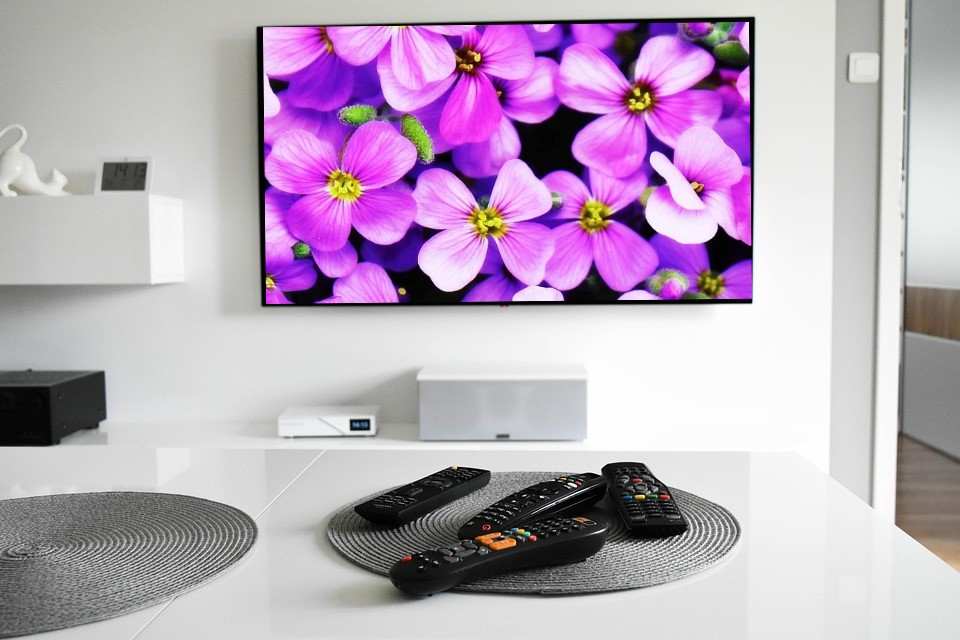
NanoCell TV technology is extremely prevalent these days. These televisions combine flashy design, groundbreaking digital technology and outstanding picture quality. With NanoCell TV, screen can be watched from angles as wide as 178 degrees. Watching TV is a dream!
LG is the company who patents this marvelous technology. This technology ensures vivid, accurate images, without the blurring and loss of sharpness found in conventional televisions.
Once you go for LG NanoCell TV, you can never go back! The display is incredible and adds a whole new dimension to home entertainment.
You must be having ample of questions regarding NanoCell TV. What is NanoCell television? Is Nano Cell Tv better than OLED and QLED? Read out further to discover more interesting information about NanoCell TV technology.
Table of Contents
What is NanoCell Tv?
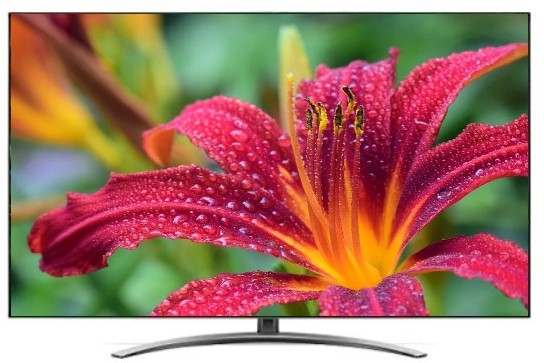
In NanoCell Technology, the unwanted light wavelengths are absorbed by Nano particles, thereby improving the purity of Red, Blue and Green colors exhibited on the TV screen.
This allows NanoCell TVs to deliver improved images with superior contrast/brightness; exceptionally vibrant color and natural tones, even at the widest of viewing angles.
This NanoCell TV technology is dissimilar from the OLED technology that is available in the present LG TVs.
Formerly, LG referred to the NanoCell technology as IPS-Nano. This technology was a blend of LG’s In-Plane Switching (IPS) LCD Technology and the Nano cells.
This gives the viewer the feeling of seeing a life-like image through a large window. NanoCell TVs have the most realistic picture ever produced by a television.
In NanoCell technology, the wavelengths between blue, green and red color filters are blocked by the light-absorbing material.
Due to this, the NanoCell technology ensures display of pure red, blue and green color on the TV screen.
NanoCell Technology
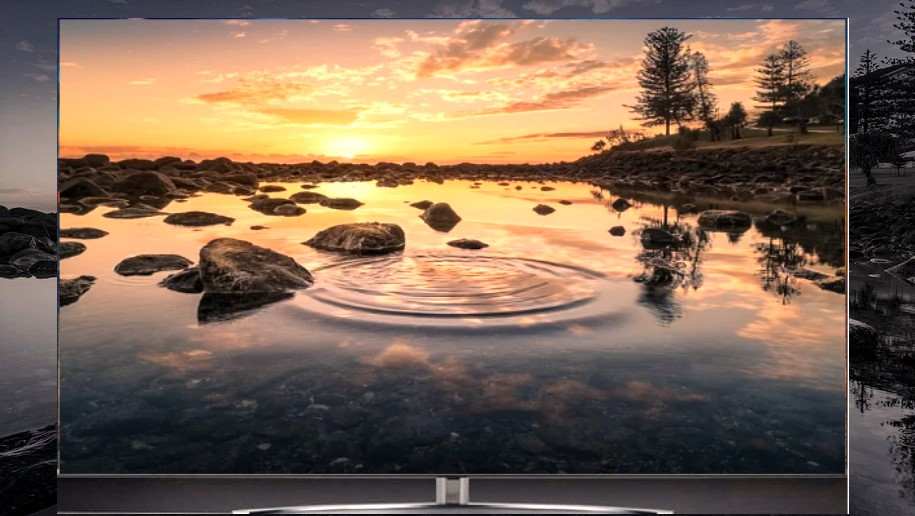
NanoCell technology is capable of producing high quality, clear, vibrant pictures and impressive picture clarity.
This technology utilizes nanoparticles incorporated into IPS panels. The best quality, images are produced which are free from fuzzy edges by filtering out the inessential color shades.
Also Checkout: [Ultimate] Smart TV Buying Guide | How to Choose the Best Smart TV?
Best Streaming Devices For Watching Movies & TV Shows
Best Media Streaming Devices Buying Guide
Choose the Best LG Nano Cell TV from our list…….
How Does NanoCell Technology Work?
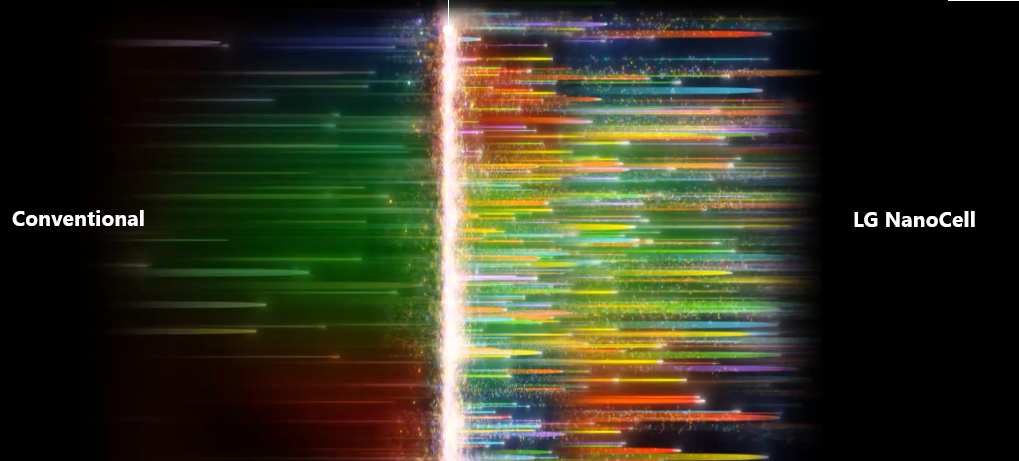
The NanoCell technology uses Nano particles (Size – 1 Nanometer) to absorb unwanted light waves in order to deliver an unbeatable and high quality color quality.
NanoCell Technology produces pure red color which is unadulterated by orange and yellow colors. This eliminates the possibility of fading of colors that causes bad user experience.
The Benefits NanoCell TV
With the innovative NanoCell Technology, NanoCell TVs have following eye-catching benefits.
✅ NanoCell Technology is a terrific innovation for those seeking increased picture quality in their television viewing.
✅ Your entire family can have a fantastic viewing experience by its viewing angles of 178 degrees wide.
✅ Since NanoCell technology filters out the colors, the images appear crisp, sharp and real to life.
✅ With LG’s NanoCell filtering the colors don’t appear faded, instead you can enjoy brilliant, bright picture – whatever angle you’re viewing from.
✅ In the nutshell, its Wide Color Gamut (WCG) gives a real-life view of colors by improving the reproduction of color on the screen.
The Exciting Features of NanoCell TV
In the traditional TV sets, viewers have to adjust their positions in the 60-degree viewing range. But with NanoCell Technology you can watch the TV from angles as wide as 178 degrees. Means you can enjoy watching TV at any position (standing or sitting to the side of TV).
NanoCell TV allows you to have a spectacular visual experience with 4K HDR support and more than one billion display colors.
Some of the top-end LG NanoCell TV models are available with the Full Array Local Dimming feature which produces magnificent contrast. This delivers deeper black and superior contrast level for dark scenes.
NanoCell TV enables the theatre-like experience at home due to its extraordinary sound quality.
With its WebOS platform, users can effortlessly switch between premium content; from internet browsers, popular apps to on-demand streaming.
NanoCell TV is provided with Alexa enabled Voice-Activated Remote for doing numerous things apart from basic work of changing channels. You can launch smart TV apps, search for your favorite programming, and can easily find nearby restaurants with voice command.
Now that you know what the LG NanoCell TV has to offer, let’s find out the comparison between today’s three finest technologies, viz, NanoCell vs OLED vs QLED.
NanoCell vs OLED vs QLED
Let’s first dig out the details about OLED Technology and QLED to have better understanding.
What is OLED Technology? (Organic Light Emitting Diode Technology)
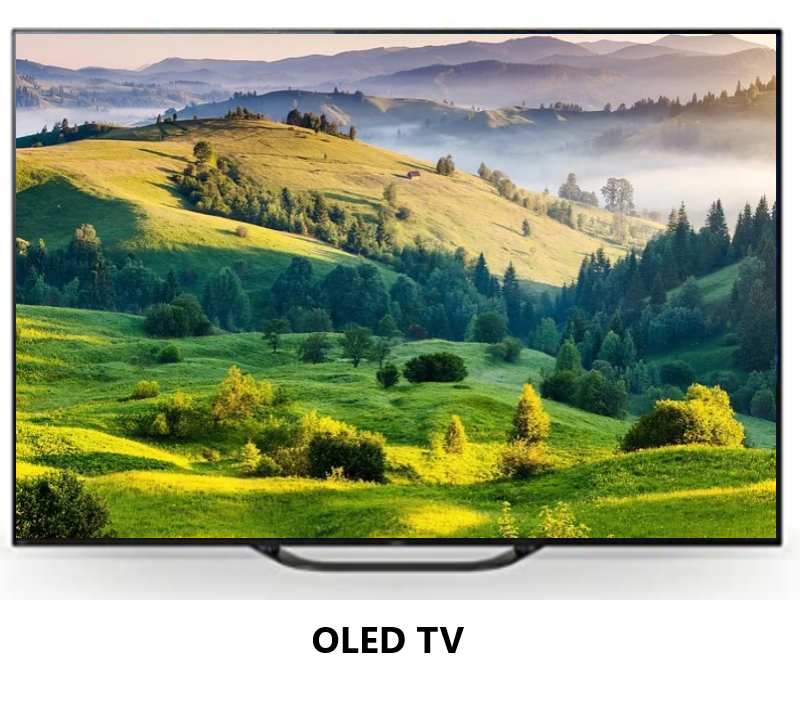
As compared to QLED, OLED is without the backlight. Consequently, with the help of this technology high-quality contrast is created as a result of perfect blacks.
The viewing angle in this technology is significantly improved since this technology can fit into thinnest as well as curved screens.
OLED technology belongs to LG. LG provides the OLED panels to Sony and Panasonic for the manufacturing of OLED TVs.
Benefits of OLED Technology
✅ Since OLEDs are versatile, it is very simple to make OLED displays or other OLED devices such as tablets, cameras, and wearable devices.
✅ In comparison to LEDs and LCDs, OLED uses large energy gap semiconductors and exhibit singlet and triplet exciton radiation phenomena.
✅ OLED screens use less power and are thus ideal for devices such as Android phones, portable game consoles, video players, and digital cameras. It offers exceptional colour fidelity, high performance, and operational consistency.
✅ Being think and small, OLEDs are lightweight.
What is QLED Technology? (Quantum Dot Light Emitting Diode Technology)
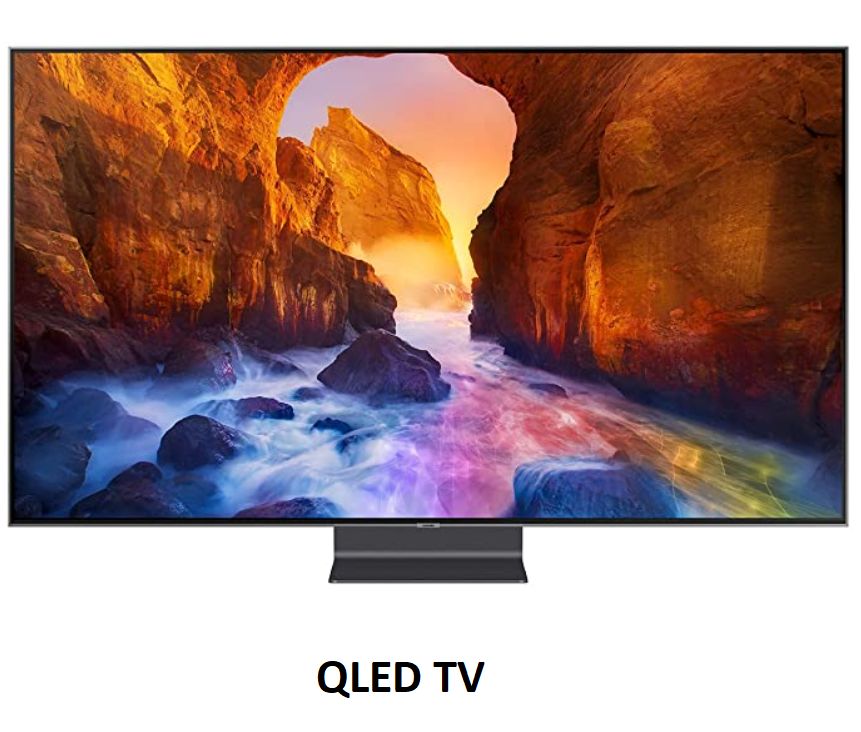
As a response to LG’s OLED technology, Samsung was the first company to introduce QLED technology in its TVs. This technology is dependent on a backlit LED panel.
QLED is the improvised version of LCD technology. QLED is a combination of LCD and LED.
QLED consists of Quantum dots, which are tiny semiconductor crystals of sizes ranging from 2 nm to 10 nm that are exhibiting each pixel. This permits 4K display standards on the LCD technology TVs.
But if you are looking for environment friendly TV, this may not be the ideal choice since QLED requires an LED backlight.
Benefits of QLED Technology
Following are the benefits of QLED Technology.
✅ Quantum dots used in QLED design are more resistant to moisture, so QLED-based products can last longer.
✅ It does not demand a costly vacuum evaporation process due to its higher moisture resistance. As a result, the QLED is inexpensive.
✅ It is available in larger display sizes, providing customers with more choices.
✅ It is slim and lightweight.
✅ The ON/OFF switching speed is extremely high.
✅ As compared to CRT and LCD displays, the brightness is around 50 to 100 times better.
✅ It consumes less electricity. In comparison to OLED displays, QLED screens are two times more energy efficient and have a brightness gain of 30 to 40%.
✅ Unlike OLED TVs, QLED TVs are not prone to burn-in.
Also Checkout: [Ultimate] Smart TV Buying Guide | How to Choose the Best Smart TV?
Best Streaming Devices For Watching Movies & TV Shows
Best Media Streaming Devices Buying Guide
Which Is The Best Technology? OLED, QLED Or NanoCell?
While comparing OLED and QLED TVs, OLED are proven to be better due to deeper blacks and improved contrast they offer. Also OLED technology are environmental friendly.
NanoCell Technology is best suited for future’s 8k TVs. The excellent quality, subtler, distortion free, crisp images can be produced using this technology.
The NanoCell TVs are well worth looking at for a serious option.
Is NanoCell TV Worth It?
While buying NanoCell Tv, you have to be aware of what functions interest you and what kinds of activities you are interested in using your television for. Depending on what accessories you are planning to use with your television the choice of a specific model could make all the difference.
We have defined below few scenarios to outline an idea of where LG NanoCell Tv really performs the best.
For Gaming Lovers
Are Nanocell Tvs good for gaming? Of Course!!! If your plans are to use the LG NanoCell TV for excessive game playing, then finding a model to accommodate would be a must.
In order to run even the latest game smoothly, LG NanoCell TV’s higher end models are provided with HDMI 2.1 the standard port, enabling a fantastic variable refresh rate (VRR) and higher frame rates.
LG NanoCell TV provides brilliant gaming performance by supporting 4K HDR.
For Movie Fans
With a 4K Ultra-High Definition resolution improved for HDR content, your movie-watching experience can’t be better than this. NanoCell TV gives the viewer the feeling of seeing a life-like image through a large window. These TVs have the most realistic, vivid picture ever produced by a television.
Additionally, LG teamed up with Dolby to build Dolby Atoms and Dolby vision into their NanoCell Tvs, delivering you the powerful, moving audio.
For Sports Enthusiasts
Apart from the amazing picture quality, you can see every minute details on ground while watching your favorite games. This will make your game watching experience a true pleasure.
The display of NanoCell Tv uses artificial intelligence which automatically senses the light levels in the room and adjusts the contrast and brightness accordingly.
Plus, you and your entire family can watch a huge, vivid picture of the entire sports-team on a very thin LG NanoCell TV from any angle regardless of their seating position.
For Families
LG’s NanoCell TV is stuffed with intelligent features which tailors your TV watching experience as per your family needs. Its webOS platform makes it easier to navigate streaming apps and content like Hulu, Netflix etc. Also, the picture quality is automatically enhanced while watching the TV due to its Alpha 7 Gen 2 Intelligent Processor
It is available with Google Assistant, LG ThinQ AI, and Amazon Alexa integrated in and is compatible with your in-house smart appliances like locks, lights, washer units etc. These appliances can be controlled via your NanoCell Tv connecting your home.
Summing Up
In the battle to shrink huge screens into paper-thin displays, LG has launched a new generation of models LG NanoCell TVs. They are one of the most advanced in the industry, delivering a wide viewing range and improved picture linearity.
Buying a LG NanoCell TV could be one of the most important and rewarding decisions you ever make. There are many luxury items people own that are not used as much, nor bring a fraction of the joy and entertainment that a LG NanoCell TV could bring for years to come for the whole family. When thinking about the future, think about your future with a LG NanoCell TV.
Also Checkout: [Ultimate] Smart TV Buying Guide | How to Choose the Best Smart TV?
Best Streaming Devices For Watching Movies & TV Shows
Best Media Streaming Devices Buying Guide
Choose the Best LG Nano Cell TV from our list…….

Pingback: Best Streaming Devices For TV in India 2021 | TechnOmipro
Pingback: [Ultimate] Best Smart TV Buying Guide - TechnOmipro
Pingback: LG vs Samsung TV: Which Smart TV is better? | TechnOmipro
nos sirvio bastante…